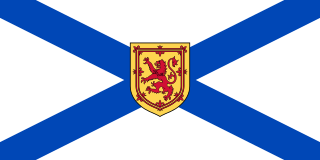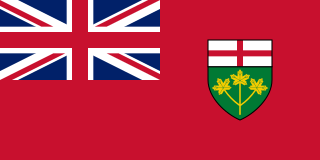
The Southeastern United States is broadly, the eastern portion of the Southern United States, and the southern portion of the Eastern United States. It comprises at least a core of states on the lower Atlantic seaboard and eastern Gulf Coast. Expansively, it includes everything south of the Mason-Dixon line, the Ohio River and the 36°30' parallel, and as far west as Arkansas and Louisiana. There is no official U.S. government definition of the region, though different agencies and departments use various definitions.

Helianthus or sunflower is a genus of plants comprising about 70 species. Except for three species in South America, all Helianthus species are native to North America. The common name, "sunflower", typically refers to the popular annual species Helianthus annuus, or the common sunflower, whose round flower heads in combination with the ligules look like the sun. This and other species, notably Jerusalem artichoke, are cultivated in temperate regions and some tropical regions as food crops for humans, cattle, and poultry, and as ornamental plants.

Halesia, also known as silverbell or snowdrop tree, is a small genus of four or five species of deciduous large shrubs or small trees in the family Styracaceae.

Gaylussacia is a genus of about fifty species of flowering plants in the family Ericaceae, native to the Americas, where they occur in eastern North America and in South America in the Andes and the mountains of southeastern Brazil. Common English names include huckleberry and "dangleberry".

Spiranthes is a genus of orchids in the subfamily Orchidoideae. They are known commonly as ladies tresses, ladies'-tresses, or lady's tresses. The genus is distributed in the Americas, Eurasia, and Australia. The genus name Spiranthes is derived from the Greek speira ("coil") and anthos ("flower"), and was inspired by the spirally arranged inflorescence.

Chauncey Delos Beadle was a Canadian-born botanist and horticulturist active in the southern United States. He was educated in horticulture at Ontario Agricultural College (1884) and Cornell University (1889). In 1890 the landscape architect Frederick Law Olmsted hired him to oversee the nursery at Biltmore Estate in Asheville, North Carolina on a temporary basis. Olmsted had been impressed by Beadle's "encyclopedic" knowledge of plants. Beadle ended up working at Biltmore for more than 60 years, until his death in 1950. He is best known for his horticultural work with azaleas, and described several species and varieties of plants from the southern Appalachian region. He and three friends, including his "driver and companion" Sylvester Owens, styled themselves the Azalea Hunters. The group traveled over the eastern United States for a period of fifteen years, studying and collecting native plants. In 1940 Beadle donated his entire collection of 3,000 plants to Biltmore Estates.

The North Carolina Botanical Garden is a botanical garden operated by the University of North Carolina at Chapel Hill in Chapel Hill, North Carolina. The primary goal of the Garden is to research, catalog, and promote the native plant species of North Carolina.

Symphyotrichum novi-belgii also known as New York aster is the type species for Symphyotrichum, a genus of the family Asteraceae whose species were once considered to be Asters. This species grows in abandoned fields and wet meadows in eastern Canada and the northeastern United States. It is popularly known as "Michaelmas daisy".

Iva is a genus of wind-pollinated plants in the daisy family, described as a genus by Linnaeus in 1753. Plants of this genus are known generally as marsh elders. The genus is native to North America.
- Iva angustifolia - southeastern + south-central United States
- Iva annua - United States, primarily south-central region; Tamaulipas
- Iva asperifolia - south-central United States, Veracruz
- Iva axillaris - western United States + Canada
- Iva cheiranthifolia - Cuba
- Iva ciliata - south-central United States
- Iva corbiniiB.L. Turner - Texas
- Iva dealbata - United States, Mexico
- Iva frutescens - coastal areas from Texas to Nova Scotia
- Iva hayesiana - California, Baja California
- Iva imbricata - coastal areas from Texas to Virginia; Bahamas
- Iva microcephala - southeastern United States
- Iva xanthiifolia - widespread in United States + Canada, introduced elsewhere

Spiranthes romanzoffiana, commonly known as hooded lady's tresses or Irish lady's-tresses, is a species of orchid. Collected by Chamisso during the Romanzov expedition it was described by him in 1828 and named for Count Nikolay Rumyantsev who financed the expedition. This orchid is native to North America, Ireland and the British Isles.
Spiranthes parksii, the Navasota lady's tresses, is a species of orchid that is endemic to Texas, United States. The flower was first discovered in 1945 and was first described by Donovan Stewart Correll in his 1950 book, Native Orchids of North America North of Mexico.

Spiranthes cernua, commonly called the nodding lady's tresses, is a species of orchid occurring from Eastern Canada to the central and eastern United States.

Spiranthes delitescens is a rare species of orchid known by the common names reclusive lady's tresses, Canelo Hills lady's tresses, and Madrean lady's tresses. It is native to Arizona in the United States, where there are only four occurrences. It is threatened by the loss and degradation of its habitat. It is a federally listed endangered species of the United States.
A cataract bog is a rare ecological community formed where a permanent stream flows over a granite outcropping. The sheeting of water keeps the edges of the rock wet without eroding the soil; in this precarious location no tree or large shrub can maintain a roothold. The result is a narrow, permanently wet, sunny habitat.

Iris prismatica, the slender blue flag or cubeseed iris, is a plant species native to parts of the southern and eastern United States from Maine south to Alabama, as well as to the Canadian provinces of Ontario and Nova Scotia.

Liparis liliifolia, known as the brown widelip orchid, lily-leaved twayblade, large twayblade, and mauve sleekwort, is a species of orchid native to eastern Canada and the eastern United States. In the eastern United States, it is found in the Appalachians, Ozarks, the Great Lakes Region, and the Ohio and Upper Mississippi Valleys, but not the southern coastal plains.

Spiranthes odorata, the marsh lady's tresses, is a species of orchid occurring in southeastern United States westward to Texas and northward to New York state.

Spiranthes ovalis, commonly called the October lady's tresses, is a species of orchid that is native to eastern North America.
Hypericum galioides, the bedstraw St. Johnswort, is a species of flowering plant in the St. John's wort family, Hypericaceae. It is endemic to the Southeastern United States.

Hypericum fasciculatum, known as peelbark St. Johnswort or sandweed, is a species of flowering plant in the St. Johnswort family, Hypericaceae, native to the southeastern United States. It is found from eastern North Carolina, south to southern Florida, west to eastern Louisiana. Kew's Plants of the World Online database also notes that it occurs in Cuba, though Cuba is not listed in several other sources. It was first described in 1797 by Jean-Baptiste Lamarck.






















